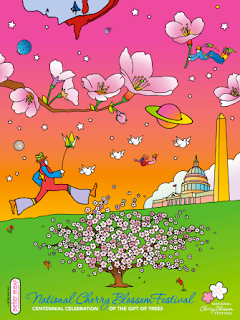The original pink and white cherry blossoms that decorate the nation's capital have managed to survive for a century. It has been 100 years since the wife of the Japanese ambassador, Viscountess Chinda, and first lady, Helen Taft, planted two Yoshino cherry trees along the bank of Washington's Tidal Basin. After that 3,000 were planted as a gift from Tokyo to symbolize friendship. Despite being worn out from age, the original pair still stands, along with about 100 of the original trees.
Special care has been taken by the National Park Service in order to preserve the original trees, including pruning and watering them to keep them alive as long as possible. In high traffic areas, cherry trees typically live about 60 years. Most trees hit their peak bloom this week during the season of spring.
To learn more about Asian themes, please visit Fujimini Island, find Fujimini Island on Facebook, follow Fujimini Island on Twitter.
The National Cherry Blossom Festival has dozens of events and exhibits and runs through April 27th. The first set of trees was infested and diseased, so agricultural officials were forced to burn them. Two years later, the Japanese sent 3,000 trees to try again. These trees arrived in good condition and the original planting was re-enacted in 1927. 1935 brought the first "Cherry Blossom Festival."
To learn more about the author of this article Eileen Wacker and her acclaimed book series, visit ONCEKids, ONCEKids on Facebook, ONCEKids on Twitter.
In 1977, the arboretum produced 500 new trees from the original line so replacements for the Tidal Basin Trees would be provided. Clones have also been saved so there is a permanent genetic repository of the original trees. Recently, the arboretum sent 120 clones of the original trees to Japan so they can also retain the genetic line. A set of trees has also been sent to Pittsburgh to be planted in parks there.





